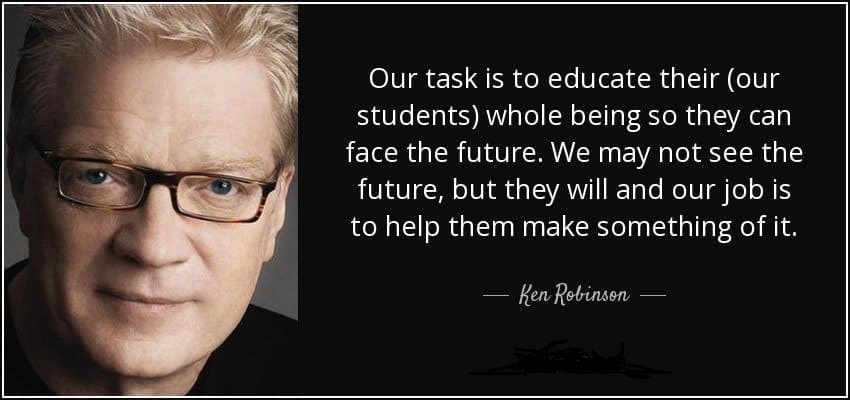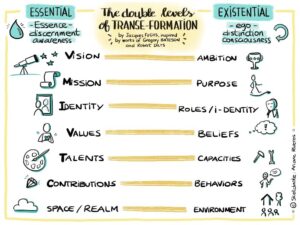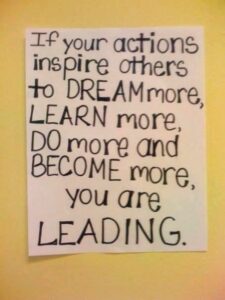Contemplation

(1950 – 2020)
With a slight shock I read last week that Sir Ken Robinson passed away at the age of seventy. In my mind I went back to my own steps in my educational career and when I had ‘met’ Ken Robinson. Around 2000 I noticed a dissatisfaction in my teaching and consultancy practice that I had been feeling for some time; ‘Surely we can do better in education….’ That feeling had not yet found the right words, until I got to know the TED lectures (started as early as 1984) and saw the tantalizing title ‘Do schools kill creativity?’, by Sir Ken Robinson. Curiously I clicked on the lecture….
Touched
I thought: ‘What a funny man. Lots of ‘side roads’ in his lecture, interspersed with personal anecdotes and meanwhile telling a dead serious story! He tells my feelings, my story!’
Here are some quotes from this TED lecture which has been watched more than 66 million times (!):
– Human communities depend upon a diversity of talent, not a singular conception of ability. And at the heart of the challenge is to reconstitute our sense of ability and intelligence.
– We stigmatize mistakes. And we’re now running national educational systems where mistakes are the worst thing you can make and the result is that we are educating people out of their creative capacities.
– Creativity is as important as literacy.
– If you’re not prepared to be wrong, you’ll never come up with anything original.
And perhaps one of the most important quotes for me:
‘The role of a creative leader is not to have all the ideas;
it’s to create a culture where everyone can have ideas and feel they’re valued’.
What makes people move?
Passion and inspiration has to do with the most important values in your life. What do you stand for? What do you think is important? What are you here on earth for? Examples of high values are: freedom, connection, contact, love, helpfulness, caring, peace, friendship, knowledge, creativity, togetherness, equality, unity, sharing, and so on.

The model of the logical levels was developed by Robert Dilts based on the work of Gregory Bateson ‘Steps to an ecology of mind’ (republished 2000). Dilts shaped the model to make change, learning and communication understandable. The model provides insight into your way of thinking, doing and feeling on different levels. So do I know what my talents and passions are? Can I find out what my core values are and what I believe in? Does that give me a better picture of who I am and what my goals (in life) are? What am I striving for? Big questions which can be inflamed by inspiration and reflection.
For me Ken Robinson made sure that I knew better what I wanted to achieve through education; ’to color the world a little more beautiful and sustainable’. I want to do actions that make others feel inspired to learn and change, making children more resilient, resourceful, reflective and social in the world.

(Quincy Adams)
Impressive is another short video of May 7th 2020; he emphasizes once again the link between the covid 19 crisis and what we can do in education, in the world. You may or may not have agreed with Sir Ken Robinson’s educational ideas, for me (and for many others) he has been an inspiration!
‘Our task is to educate their (our students) whole welbeing, so they can face the future. We may not see the future, but they will and it’s our job to help them make something of it!’ (Sir Ken Robinson)
26 august
Drs. Anton de Vries
Do School kill creativity
https://www.ted.com/talks/sir_ken_robinson_do_schools_kill_creativity
My thoughts for call to unite (mei 2020)
https://www.youtube.com/watch?v=QU4Q17t4muY